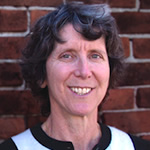
Nora Goldstein
BioCycle January 2014
This year isn’t even two weeks old and already the news is trending positive for composting and anaerobic digestion. California Governor Jerry Brown released his 2014-2015 budget proposal, which includes $30 million to provide financial incentives for capital investments in new or expanded clean composting and anaerobic digestion (AD) facilities that are necessary to divert more materials from landfills. The National Waste & Recycling Association released findings of its survey of 2,000 adults that suggests Americans would be open to diverting food waste if it were more convenient, expressing a willingness to manage another bin to separate food waste from recyclables and other trash if their community implemented a program requiring them to do so. And a day before New Year’s Eve, outgoing New York City Mayor Michael Bloomberg signed a City Council bill that requires diversion of commercial organics from the largest food service generators in the City to composting and AD.
And then there is this month’s cover story, “Found: Composters Taking Food Scraps!” (page 24). Beginning last April, and still continuing, BioCycle and the Biodegradable Products Institute (BPI) — working with Bright Beat, a sustainability consulting firm based in Chicago — have been updating and adding to the listings in the BioCycle online directory, FindAComposter.com. The first phase of the project was to update existing listings in the directory; Phases II and III have focused on identifying food scraps composters not currently in FindAComposter.com (FAC). Phase I, completed at the end of August 2013, resulted in 264 composters in the FAC online directory that are taking food scraps. Phase II, completed in late December with assistance from state organics recycling officials, identified about 250 new food scraps composting facilities. Phase III, occurring in January and February, is verifying that these sites are currently accepting food scraps for composting, and then adding them to the FAC online directory.
BioCycle and BPI launched FindAComposter.com in 2007 because at that time, interest in diverting food scraps to composting was growing, yet there was a perception that the infrastructure to compost food scraps in the U.S. was limited. The FAC directory was created for all permitted (or exempt from permitting) composting facilities in the U.S. and Canada, not just those accepting food scraps. At this moment, FindAComposter.com contains more than 500 verified composting facilities in the U.S., and 191 verified Canadian composting facilities (pending listings are verified by BioCycle editors before the listing is activated). There is no fee to be listed, or to use FAC.
In late January, while in Oakland, California for the annual US Composting Council Conference, we will be taking a side trip to tour the newly opened anaerobic digestion and composting facility in San Jose. The Zero Waste Energy Development Company facility is processing organics from the commercial sector in San Jose. Incoming organics are anaerobically digested in a dry fermentation system; after three to four weeks, materials are moved into composting tunnels. The first phase of this three-phase project is designed to process 90,000 tons/year of commercial organics. The integration of AD and composting in one facility capitalizes on the strengths of each organics recycling method — production of energy, followed by manufacturing of high quality soil amendments.
Indeed this is an exciting way to kick off the New Year! Composting is heating up, and it isn’t just because of happy microbes!









